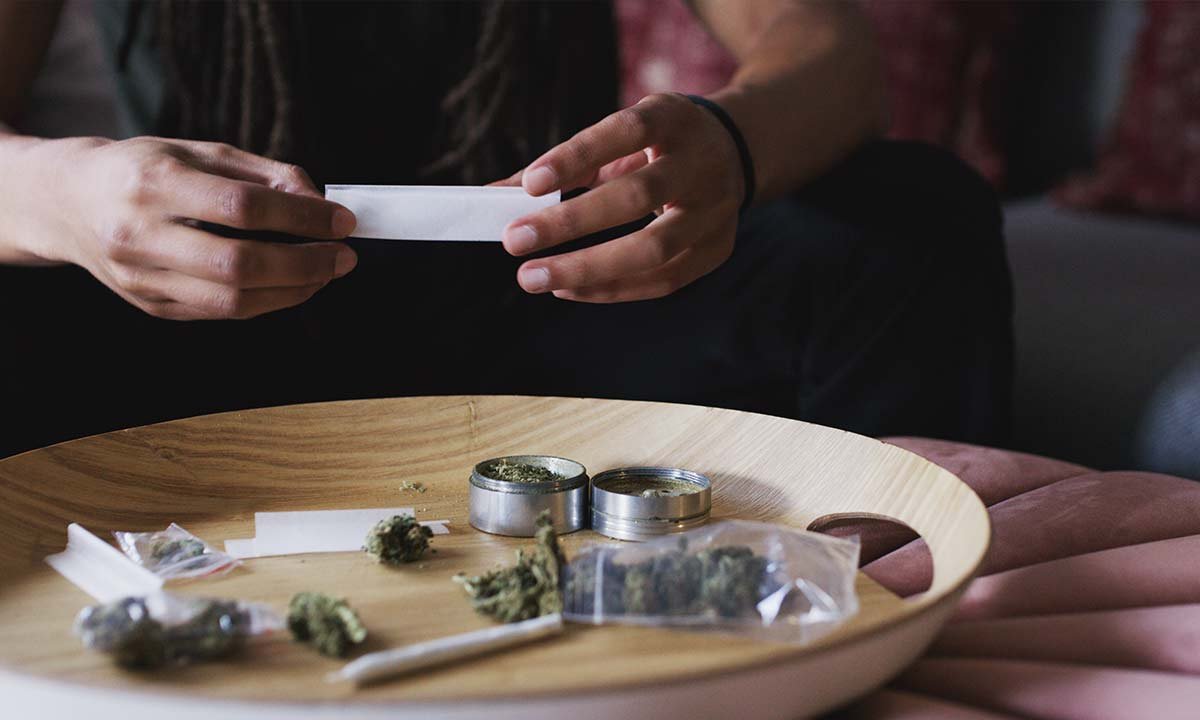What is Charas? Uncovering the Mystique, Risks, and Cultural Legacy of India’s Ancient Cannabis Extract

What is charas? This is a question that often comes up when discussing cannabis concentrates and their unique place in history and culture. Charas is not just any cannabis product; it is a hand-crafted, live cannabis resin that has been cultivated and used for centuries in India, Nepal, and surrounding regions. While charas has a deep connection to spirituality and religious practices, it also comes with significant legal and health implications. Understanding what charas is, its historical roots, production methods, and its impact on mental health is essential for anyone interested in this ancient substance.
In this post, we’ll dive deep into what charas is, its cultural significance, how it’s made, and the potential risks associated with its use.
What is Charas?
Charas is a unique form of cannabis concentrate that is hand-made from fresh, live cannabis plants. Unlike hashish, which is made from dried cannabis flowers, charas is crafted by rubbing live cannabis buds to extract the sticky resin. The resin collected is then shaped into small balls or blocks. Known as “Black Gold of the Himalayas,” charas is famous for its potent psychoactive effects and is considered one of the finest and purest forms of cannabis concentrate.
The process of making charas is quite different from that of other cannabis products like hashish, where the resin is usually extracted from dried cannabis. Charas is hand-rubbed while the plant is still alive, which contributes to its distinctive texture and potency. It is highly revered for its unique aroma and the quality of its effects, which are believed to be calming and euphoric.
Historical and Spiritual Origins of Charas
To understand what charas is today, we must first explore its historical and spiritual significance. Charas has been used for thousands of years, particularly in Hindu rituals where it is associated with the worship of Lord Shiva. Charas is not just a recreational substance; it has spiritual roots and is deeply intertwined with religious practices in India and Nepal. In some regions, charas is consumed during sacred festivals like Maha Shivaratri, where it is believed to aid in meditation and elevate the consciousness of devotees.
Historically, charas has also been referenced in ancient texts such as Pharmacographia, which documented its use in both medicinal and ceremonial settings. In the high-altitude regions of India, such as Himachal Pradesh, Kashmir, and in Nepal, charas is cultivated and used as an integral part of local culture and traditions.
How is Charas Made?
The production of charas is an ancient and intricate process. To understand what charas is, it’s important to recognize the unique methods used to make it. Here’s how charas is typically made:
- Hand-Rubbing Process: The cannabis flowers are picked while still alive, and the resin is extracted by hand-rubbing the buds. This creates a sticky resin that sticks to the palms of the hands.
- Collection of Resin: After rubbing, the resin is carefully scraped off the hands and collected. This resin is often shaped into small balls or pressed into blocks, which is the final form in which charas is sold.
- Drying and Curing: Once the charas is collected, it is dried and cured to preserve its potency and aroma.
This hand-rubbing technique is what distinguishes charas from other forms of cannabis concentrates, such as hashish, which are typically made using mechanical or chemical extraction methods.
Popular Types of Charas
There are various types of charas that come from different regions, each with its own distinct characteristics. Some of the most well-known types include:
- Malana Cream: This variety of charas comes from the Malana Valley in Himachal Pradesh, India. Known for its smooth texture and potent effects, Malana Cream is one of the most sought-after types of charas
- Kerala Gold: Originating from the southern regions of India, Kerala Gold is known for its golden hue and powerful effects.
- Rasol Cream: This variety comes from the Kashmir region and is known for its rich aroma and potent psychoactive effects.
- Tosh Ball: Produced in the northern regions, Tosh Ball is a pure and potent form of charas, appreciated for its distinctive texture and flavor.
Charas vs Hashish: What’s the Difference?
Understanding what charas is also requires distinguishing it from other cannabis concentrates, such as hashish. Here are the key differences:
- Source: Charas is made from live cannabis plants, while hashish is made from dried cannabis flowers.
- Production Method: Charas is hand-rubbed to extract the resin, whereas hashish is usually made through mechanical or chemical extraction.
- Texture and Potency: Charas tends to be stickier and more potent due to the use of live plant resin. It has a smoother texture and is generally stronger than hashish.
- Cultural Significance: While both substances are used for recreational purposes, charas has deep cultural and religious significance in India and Nepal, especially in Hindu rituals.
Consumption and Psychoactive Effects
Charas is typically consumed by smoking it in pipes, joints, or traditional chillums. The psychoactive effects of charas are well-known and often include:
- Euphoria: A sense of intense happiness and contentment.
- Altered Perception: Time and space may seem to slow down, and users often experience heightened sensory awareness.
- Mental Calm: Many people use charas for its calming effects, which help ease stress and anxiety.
Due to the high THC content in charas, it can be quite potent. It’s important to consume it responsibly, as excessive use can lead to adverse effects, including paranoia, anxiety, and in some cases, dependency.
Legal Status of Charas Globally
Charas is illegal in India under the Narcotic Drugs and Psychotropic Substances (NDPS) Act. The production, sale, and possession of charas are criminal offenses, although the substance is still used ceremonially in certain religious and cultural practices. In some regions, charas is even considered a sacred offering to Lord Shiva.
Internationally, the legal status of charas varies. In some countries, it is treated the same as other forms of cannabis, being either illegal or decriminalized for medicinal or recreational use. However, in other regions, particularly where cannabis use is illegal, charas remains strictly prohibited.
Health Risks and Mental Health Concerns
While charas may offer cultural and recreational benefits, it’s important to be aware of the health risks associated with its use:
- Dependency: Like other cannabis products, charas can lead to dependency, especially with regular use. Professional treatment can be found at our alcohol addiction treatment centre and drug addiction center.
- Mental Health Issues: High doses of THC can lead to anxiety, paranoia, and even psychosis, especially in individuals with a predisposition to mental health disorders. For related support, explore our resources on panic disorder treatment, depression treatment, and schizophrenia treatment.
- Effects on Developing Brains: Adolescents and young adults may be particularly vulnerable to the cognitive and emotional effects of charas, which could impact brain development.
It is crucial for individuals to be aware of these risks and seek professional help if they believe they may have developed a dependency on charas.
Athena’s Perspective: Awareness, Prevention, and Healing
At Athena Behavioral Health, we believe in the importance of understanding substances like charas within the context of mental health and addiction recovery. While charas has cultural and traditional value, it is essential to recognize the potential for misuse and the harm it can cause to mental health.
Substance misuse often stems from deeper emotional or psychological challenges. If you or someone you know is struggling with substance use or mental health concerns, Athena Behavioral Health offers comprehensive support and resources to help individuals overcome their challenges. Our NABH-accredited centers provide expert care tailored to each person’s needs, supporting them on their journey to recovery and well-being.
Conclusion
What is charas? It’s a potent cannabis concentrate with deep cultural, historical, and spiritual significance. While it plays an important role in certain regions and traditions, charas is not without its risks. Whether you are curious about its origins, production, or its psychoactive effects, it is essential to approach charas with awareness and responsibility. If you or someone you love is facing challenges related to substance use or mental health, Athena Behavioral Health is here to help.
Frequently Asked Questions
Charas is made from the fresh resin of live cannabis plants, which is hand-rubbed to extract the sticky resin.
No, charas is made from live cannabis plants, while hashish is made from dried cannabis flowers.
Charas can induce euphoria, altered perception, and mental calm due to its high THC content.
Charas is illegal in India under the NDPS Act, but it is used in certain religious and ceremonial settings.
Long-term use of charas can lead to dependency, psychosis, anxiety, and cognitive impairments.
Malana Cream is considered one of the purest and most potent forms of charas, known for its smooth texture and rich effects.
Charas is commonly smoked in joints, pipes, or traditional chillums.
While some people use charas for its calming effects, its use is not widely recognized in mainstream medical treatment due to its psychoactive properties.






